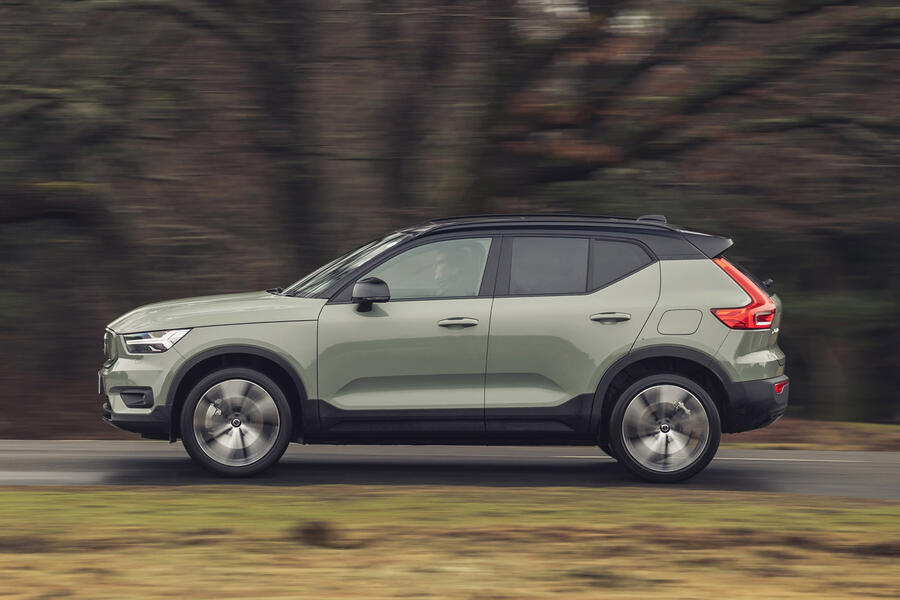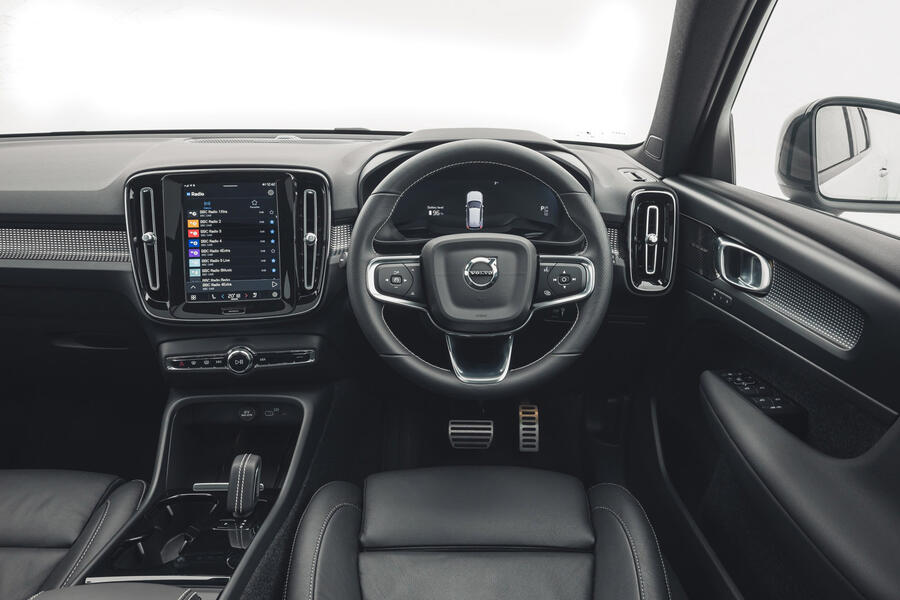What is it?
It’s hard to shake the feeling that the car posing the biggest threat to the new Volvo XC40 P8 comes from within the Geely Group itself.
The Swedish manufacturer’s first fully electric production model is effectively a Polestar 2 in an XC40- shaped frock; and in P8 guise – currently the only variant of this new Volvo that’s available in the UK – the two cars are extremely close when it comes to on-paper specification.
Considering they share the same CMA architecture, the same 75kWh (usable capacity) battery and the same electric motors (one at each axle for all-wheel drive), that alignment is unsurprising. Both cars are good for 402bhp and 487lb ft, and the Polestar can hit 62mph from rest in 4.7sec, the Volvo in a not dissimilar 4.9sec.
There’s a bit more of a difference when it comes to range, though: the Polestar’s 292-mile claim outstrips the Volvo’s 257-mile rating. Given the Polestar is actually 10kg heavier than the electric XC40, it seems this difference is down to the boxy Volvo SUV simply having a tougher time pushing through the air than its lower-slung Geely Group stablemate.

What's it like?
Interestingly, the XC40 feels the heavier car on the road, too. This is due to its looser body control. Step on the throttle and not only will you experience a fairly alarming level of acceleration, but you’ll also notice how markedly it squats down on its haunches. It’s a similar story under heavy braking, only with the car’s mass thrown forwards.
It leans hard during cornering, and on rolling stretches of road there’s a fair amount of bouncing movement. That up-and-down travel, which actually lends the Volvo a nice sense of pliancy through dips, is accompanied by a chatty secondary ride as well. You feel almost every lump or bump you roll over, even if the impacts are rounded off smartly.
Combined with the car’s absurd pace and seats that lack proper lateral support for your torso but are still quite firm, it makes the XC40 P8’s dynamic character feel a bit of a muddle. The soft sponginess that could potentially make it a comfortable cruiser is undone by the fussy secondary ride and the uncomfortable chairs.
Meanwhile, the pronounced lateral roll and mute, lightweight steering dilute the sense of athleticism its pace and high mechanical grip levels might have otherwise instilled. Admittedly, the Polestar isn’t the most engaging or rewarding fast EV, but it makes a lot more dynamic sense than the Volvo.

